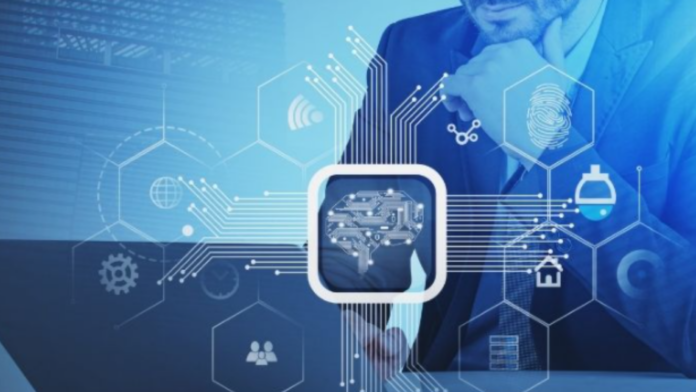Deep learning has come a long way in recent years. Deep learning projects are now being used to improve a wide range of business operations and processes by making use of powerful algorithms. From predictive analytics to natural language processing, deep learning technology is having an ever-increasing impact on the success of businesses around the world. In this article, we will explore how deep learning projects have evolved over time and the ways that this technology is transforming the business landscape today.
Deep Learning Projects
The world of deep learning has revolutionized the way businesses approach their projects. Companies are starting to use the power of artificial intelligence (AI) to come up with very detailed and accurate solutions for everything from processing natural language to recognizing images. With the increased capabilities of machine learning, deep learning projects can be used in a variety of different ways across multiple industries.
Deep learning is not only limited to large corporations but also to smaller businesses. Startups have been able to use this technology to come up with creative solutions that would have needed a lot of data and complicated algorithms in the past. Deep learning projects have also made it easy for organizations to get useful information from large datasets and have given more accurate results than traditional methods. By harnessing the power of AI, businesses can gain an edge over competitors and make better-informed decisions faster than ever before.
What Is Deep Learning?
Deep learning is a form of artificial intelligence that is very advanced and is used to do many things in the modern world. It has been around since the 1950s, but recent advances in technology and computing power have allowed businesses to leverage its capabilities in more ways than ever before. Deep learning uses a complex network of algorithms and layers to analyze data, find patterns, and make decisions without any help from a person.
Businesses are turning to deep learning projects for their big data needs as it is able to process large amounts of information quickly and accurately. This type of machine learning uses complex neural networks that can learn from experience. This lets them find outliers in data or figure out what things are in pictures faster than humans can. By leveraging the power of deep learning, businesses can gain better insight into their customers’ behaviors or target new markets with greater accuracy.
Business Benefits of DL
The implications of deep learning projects in business are far-reaching. Deep learning (DL) is a subset of machine learning that mimics the way humans learn by using large amounts of data to identify patterns, solve problems, and make predictions. With DL, businesses are able to improve customer service, streamline administration tasks, and enhance decision-making.
Businesses can use DL to drive operational efficiencies, reduce costs, and optimize processes. For instance, natural language processing techniques enable businesses to interact with customers in a more efficient manner, while predictive analytics ensure that companies can anticipate customer needs before they arise. Additionally, DL can be used to automate time-consuming tasks such as data entry and analysis or supplement existing AI systems with improved accuracy and performance.
Overall, DL enables businesses to save money on labor costs while simultaneously increasing productivity.
Types of DL Projects
Deep learning projects have revolutionized the way businesses operate. Deep learning has given businesses an edge in the market and allowed them to take on new challenges because it can automate complicated processes. However, there are many types of deep learning projects that can be undertaken in business today.
One type is supervised machine learning (SML), which uses labeled datasets for training models and making predictions about future outcomes or trends. Unsupervised machine learning (UML) doesn’t need data sets that have been labeled. Instead, it uses algorithms to find patterns in the data. Reinforcement learning (RL) is an advanced type of machine learning that uses trial and error to solve problems by giving rewards for actions or decisions that work well. SML is often used for supervised learning, which is typically done when the model requires a baseline of historical data to make predictions about future outcomes. It is perhaps most useful in helping businesses predict customer behavior or detect patterns in big data sets. In the same way, UML is most often used for unsupervised learning and can help businesses find patterns in data sets that might not be obvious at first glance. RL is generally used to solve problems where the model is not given any prior information about the problem.
Deep learning projects are quickly becoming a vital part of many businesses’ operations. This new class of artificial intelligence, or AI, has revolutionized the way companies approach complex tasks and processes. From natural language processing to computer vision, deep learning is being used in a variety of ways to streamline business activities. Here’s an overview of the different types of deep learning projects that businesses have adopted:
Natural language processing (NLP) allows computers to understand and interact with human languages. It enables machines to comprehend written or spoken commands and respond accordingly. NLP is used in customer service applications, virtual assistants, search engines, conversational user interfaces, and more. Computer vision uses algorithms to recognize images or videos and identify objects within them. Companies use this technology for facial recognition, object detection, and image classification applications. Speech recognition is used to convert human speech into text, which has a variety of applications, including voice search, hands-free navigation, and accessibility for the visually impaired.
allows computers to understand and interact with human languages. It enables machines to comprehend written or spoken commands and respond accordingly.
Companies Leveraging DL
The world of business has been revolutionized by the power of deep learning (DL). As companies explore the potential of this technology, new solutions are created that help them improve their operations. DL is an advanced type of artificial intelligence (AI) that uses neural networks to find patterns in huge amounts of data. It enables businesses to develop complex models and optimize their decision-making capabilities in order to increase efficiency and accuracy.
Businesses have already begun leveraging DL for a variety of purposes, including predictive analytics, natural language processing, computer vision, and autonomous vehicle operation. Predictive analytics allows companies to better anticipate customer needs and preferences, while natural language processing can enable more effective customer service conversations. Meanwhile, computer vision is allowing businesses to automate certain tasks through image recognition, while autonomous vehicle operation is allowing companies to reduce costs associated with transportation.
DL Project Difficulties
Deep learning (DL) has changed the way businesses work by giving them chances to find new insights and make artificial intelligence solutions. Even though DL projects have a lot of potential, many organizations have trouble putting them into action because they are so complicated. These challenges are often overlooked, but they can have serious implications for a project’s success.
Companies that try to do DL projects need to be aware of things like scalability and budget limits. By knowing about these limits ahead of time, organizations can make changes to their plans and make sure that project goals stay realistic. Additionally, organizations should be sure to consider the effects of data skew or lack thereof; if not handled properly, it could lead to significant delays in completion times or even failure in their endeavor.
Conclusion: Future of DL in Business
Deep learning (DL) has been a big game-changer in business, helping to improve operations and make things run more smoothly. Companies have been able to make more accurate prediction models, automate boring tasks, and even create new ways to make money by using DL in different ways. As businesses keep looking into the possibilities of DL, there are a lot of ways it could be used in the future.
This article talked about how deep learning projects in business have changed over time and how they are becoming more and more important for businesses that want to stay competitive. With improvements in technology like better hardware, easier access to data sets, and better algorithms, businesses will be able to use more complex DL projects that are more likely to be accurate and have a better chance of being successful. In the end, businesses can use DL as a tool to open up new opportunities and make their organization more efficient overall.



















